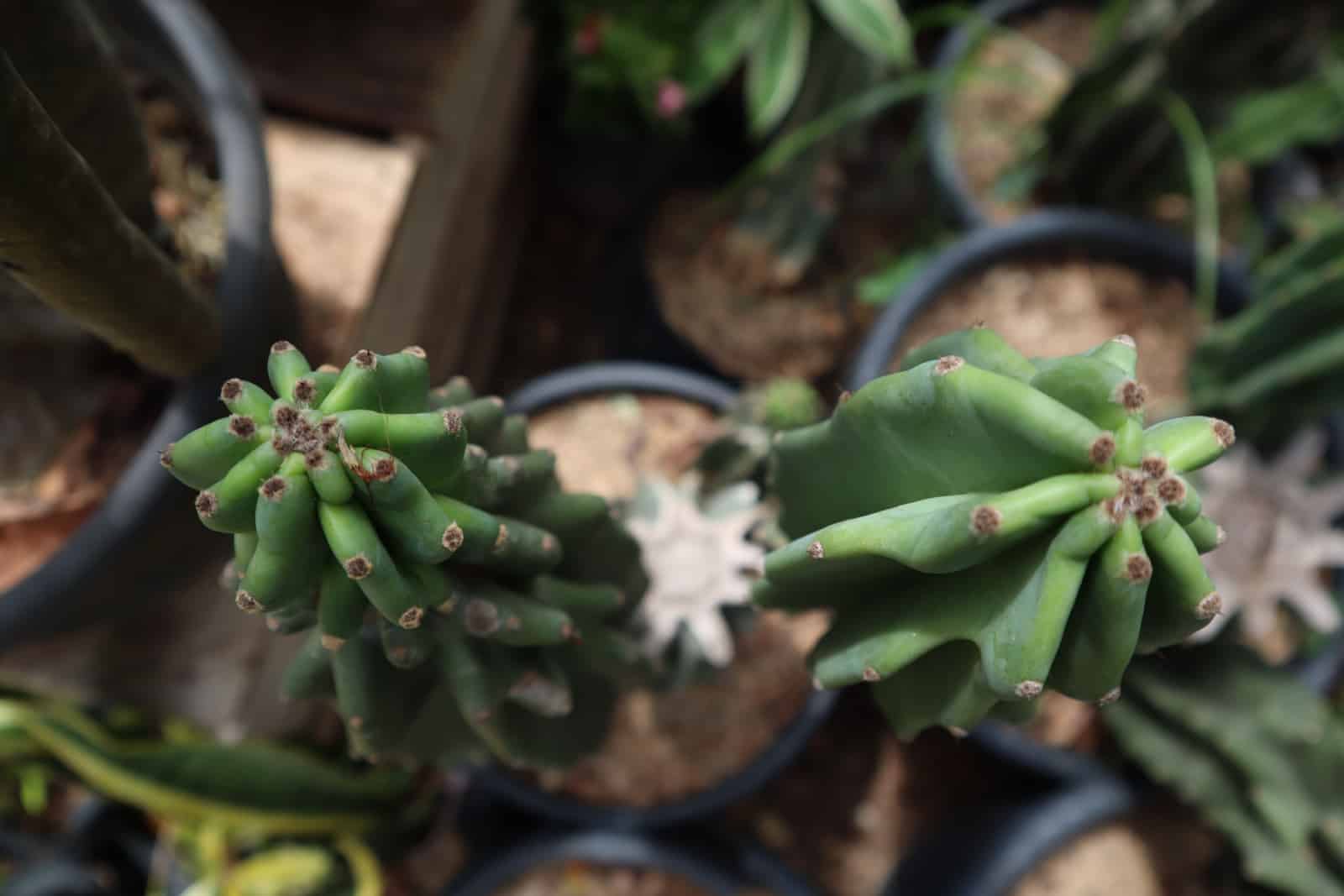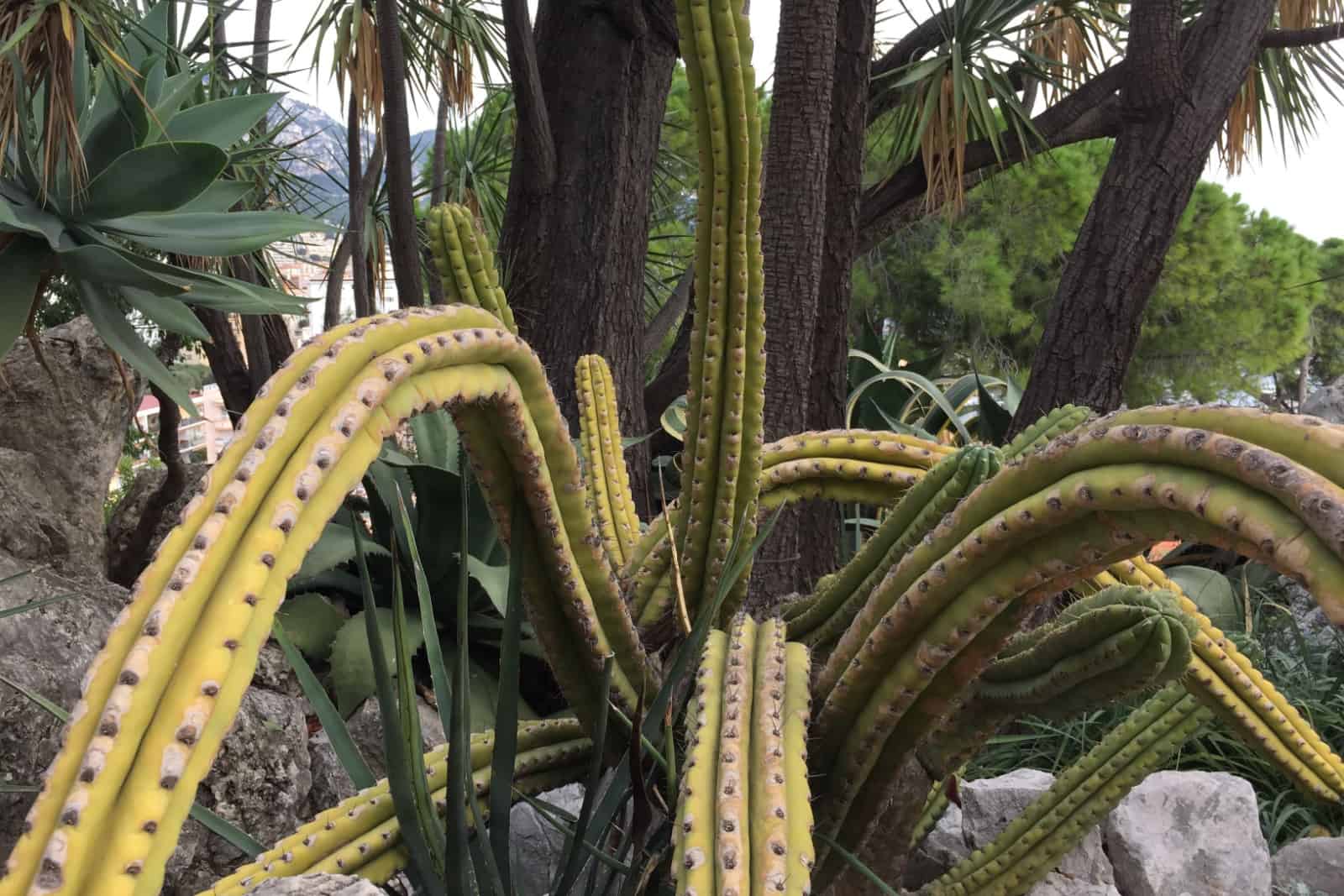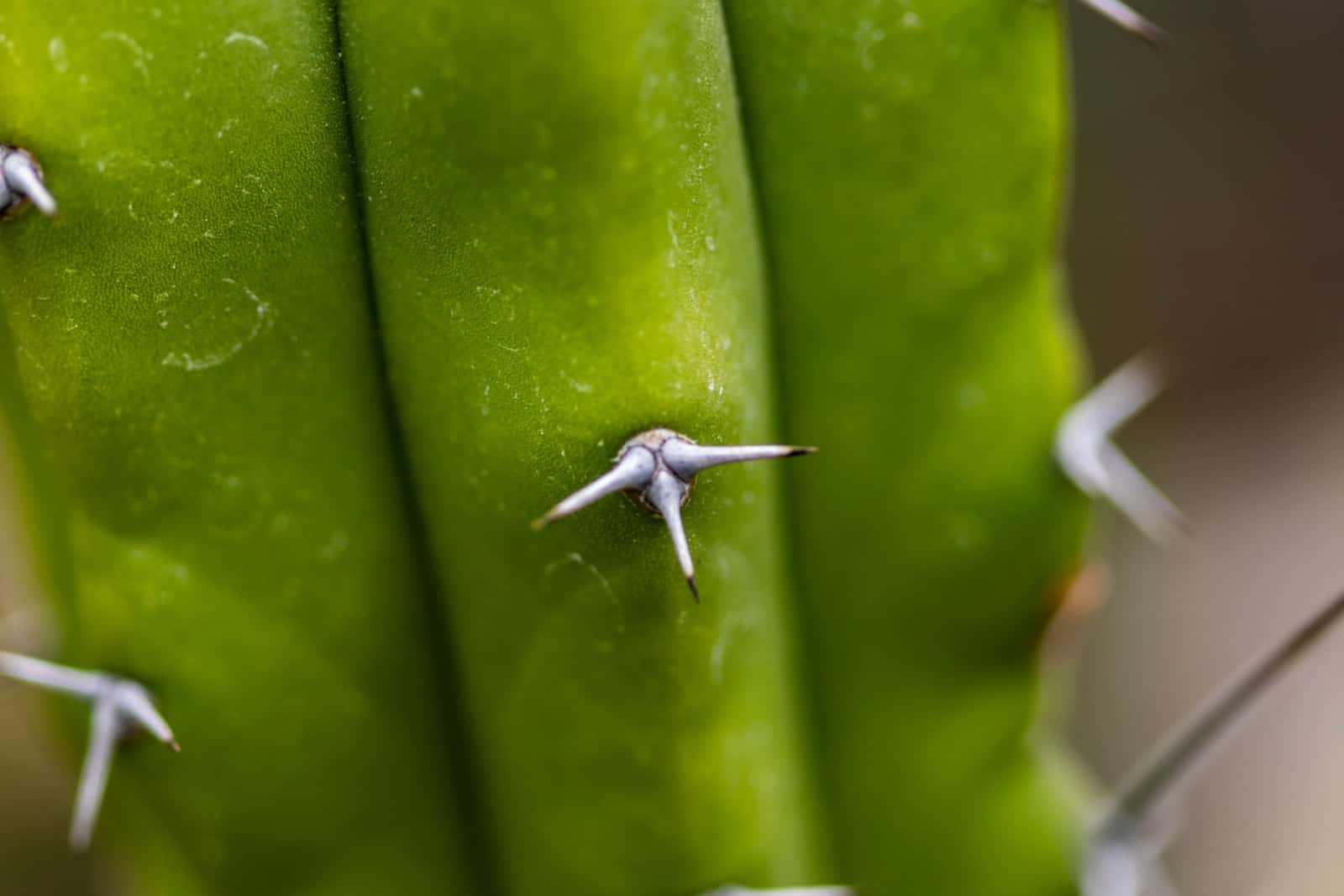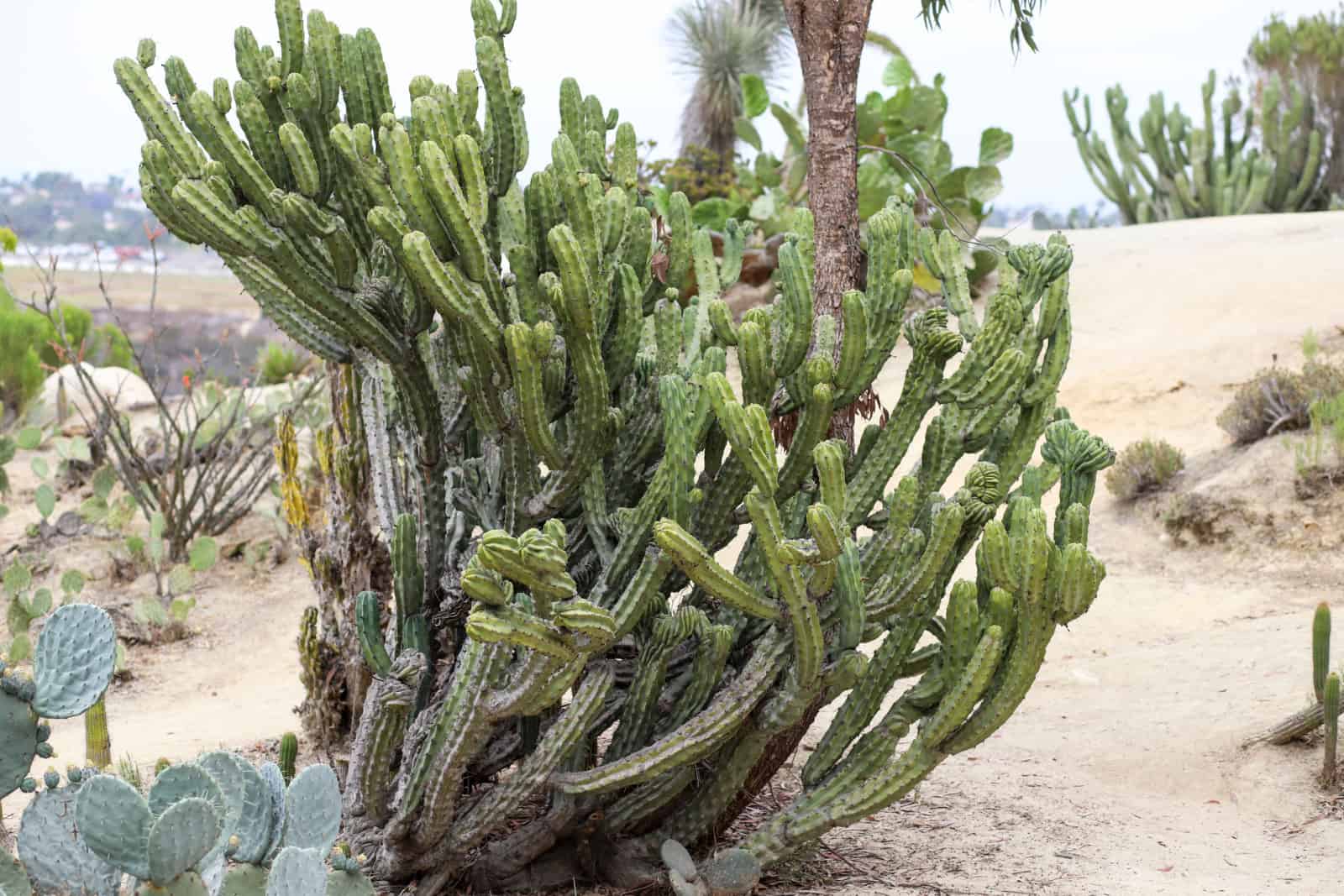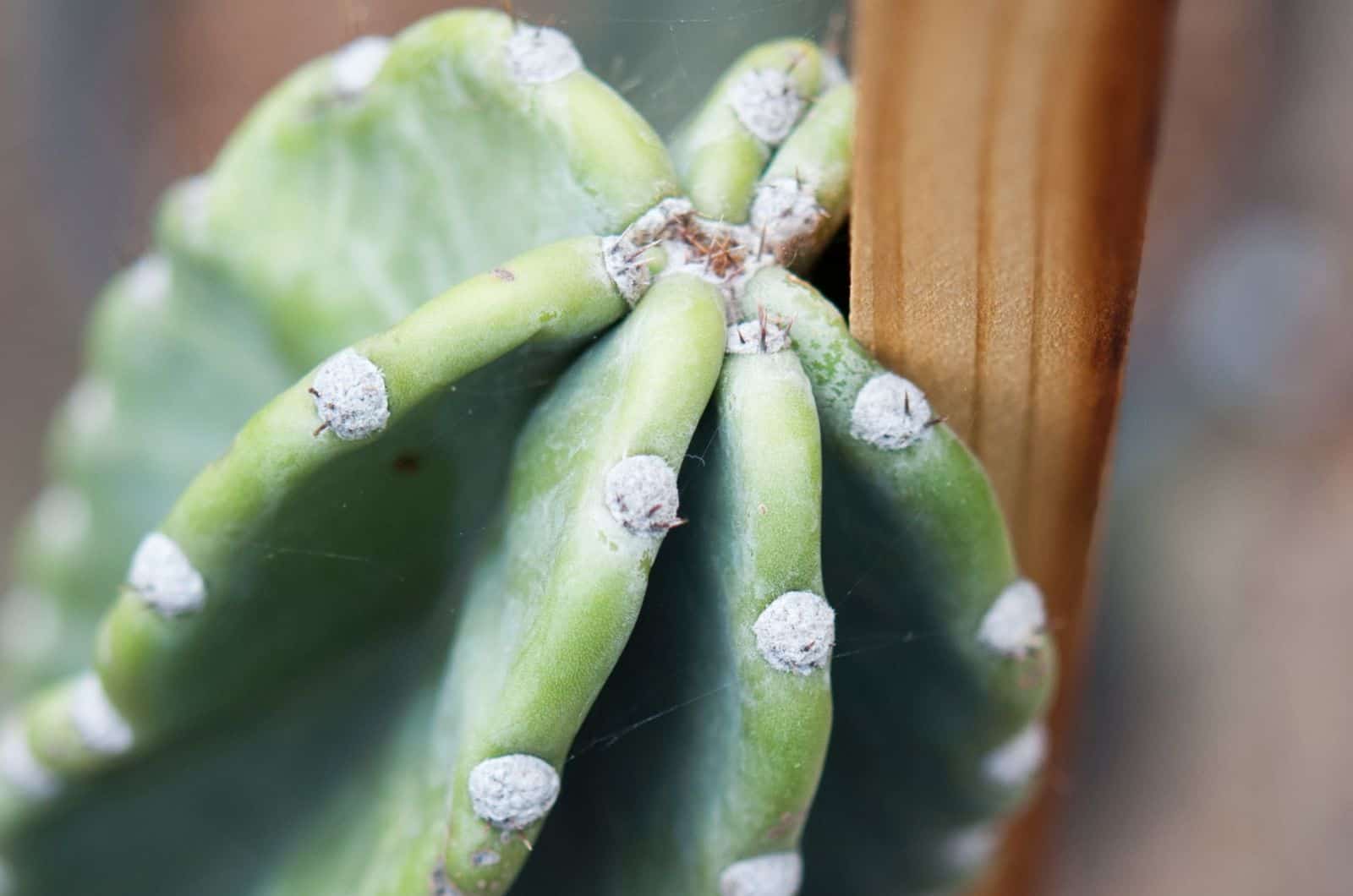If you are a plant enthusiast, then you must have grown at least one cactus indoors. These plants are so easy to maintain, yet they look so beautiful. I especially love the dwarf varieties that you can put on a table — they look absolutely adorable!
Today, we will be talking about a columnar succulent called the Blue myrtle cactus.
This plant is highly branched and produces thick stems that grow close to each other. The color of the stems varies from bluish-green to deep green, and it also produces magnificent greenish-white flowers.
If you are feeling blue, get yourself a Blue myrtle cactus plant to cheer you up!
Keep reading to find out more about this special cactus, and also how to take care of it.
What Is The Blue Myrtle Cactus?
The Blue myrtle cactus is a columnar cactus that belongs to the Cactaceae family. They are semi-hardy plants that can be grown indoors and outdoors (if the USDA hardiness zones are suitable for growing).
It belongs to the genus Myrtillocactus geometrizans, also known as the Cereus geometrizans and Myrtillocactus grandiareolatus. The word “Myrtillocactus” comes from the Greek word “myrtillus”, which means small myrtle, while geometrizans symbolizes the geometric patterns of the plant.
The Blue myrtle cactus has acquired a lot of nicknames. The most common names include the Blue candle cactus, Bilberry cactus, Garambullo, and Whortleberry cactus.
Origin
The Blue candle cactus originates from central and northern Mexico. It is commonly found in the Chihuahuan desert. However, this Mexican beauty can easily be cultivated indoors.
Plant Size
The Blue candle is a tree-like cactus that can grow up to 15 feet tall!
The stems are up to 4 inches thick and have 5 to 8 ribs that are each about 1 inch deep. The areoles are separated by around 1 inch. The average areole has 3 to 5 spines, each measuring up to 0.5 inches long. The fruits are dark crimson, rectangular, up to 0.8 inches in diameter, and also called Garambullo. The blossoms are up to 1.4 inches in diameter.
Growth Habits
This candelabra cactus has a unique growth habit. The young plant looks like a single stem growing vertically. As the plant continues to grow and develop, it starts to produce tree-like branches that grow relatively close to each other.
When it comes to the growth rate, we can say that the Blue myrtle cactus has a moderate growth rate, although some might say that this is a fast-growing cactus plant.
Appearance
The name says a lot about this cactus’s appearance — it has bluish stems that look like candles when young, hence the nickname “Blue candle cactus”.
The color of the stem can vary from blue to greenish, and the ribs form a unique pattern, which is why they have the word “geometrizes” in their botanical name.
These cacti have a main stem that is like a trunk, and they start branching profusely and create a shrubby appearance. The stems have smooth and waxy surfaces that help with retaining moisture.
In the spring, the plant produces small white-greenish flowers that have a beautiful fragrance. In the beginning, the flower color is white, and it swiftly turns red as time passes. They can attract pollinators, which is why they are often added to outdoor gardens.
These flowers will later turn into oblong fruits that have a dark red and purple color. These fruits are edible and they have a sweet flavor.
Blue Myrtle Cactus Plant Care Guide
As you may already know, taking care of cacti plants is relatively easy. You won’t have to worry about watering, humidity, or the potting soil that much. They are used to growing in deserts with almost no water or nutrients.
Therefore, I’m sure you will be fine with Blue myrtle cactus plant care.
You will have to provide them with full sun, warm temperatures, and water every now and then. If you are considering growing it outdoors, be aware that they thrive in USDA hardiness zones 9a to 11b.
Keep reading to learn more about the plant care guide for the blue myrtle cactus.
Soil Requirements
The best soil mix for cactus plants is a well-drained soil mix that drains water quickly and prevents waterlogging. The main issue with this plant is overwatering.
In case of overwatering, your cactus plant will turn black and start rotting. Frequent watering and bad potting soil lead to overwatering issues. You can put tiny pebbles in the soil to recreate their natural habitat, and you can also add perlite or vermiculite.
They are not picky about soil type, though it appears that sandy soil is best for them. To grow this columnar cactus, you can always buy some cactus potting soil mixes, though succulent potting soil mixes can also be used.
Some good advice for avoiding overwatering is ensuring that the cactus pot has drainage holes in the bottom so excess water can drain easily.
Light Requirements
Since these plants originate from deserts, they are used to growing in full sun exposure. This is why you will have to ensure that they receive plenty of direct sunlight. However, you should keep the young plant in light shade and gradually expose it to full sun as it matures.
If the plant is scarring and burning, the sun is probably too intense, so you will have to protect it. I would advise you to simply move it further from the window.
If the plant is discolored, then it is probably not receiving enough sun. In this case, put your plant closer to a window that is exposed to sunlight for the majority of the day.
Be careful with light level, as lack of light may lead to cactus etiolation.
Water Requirements
The watering needs of your Blue myrtle cactus plant are determined by the temperature and humidity of its environment, so there is no set watering schedule. If the humidity is quite high and you keep watering your plant, it will probably result in overwatering.
The best move is to examine the soil before watering. Ensure that you water them thoroughly so that the water flows out through the drainage holes.The soil should completely dry out between waterings.
Cacti plants generally should be watered weekly during the summertime, but check if the soil is completely dry regardless of the season. These plants should not be watered during fall and winter.
During the winter, always make sure the potting soil is dry. Occasionally misting your indoor cactus plant can help it keep its vibrant color!
Read also: How Often To Water Cactus Indoors And Other Important Info
Temperature Requirements
These plants do best in warm environments, so typical room temperature should be ideal for their growth. Between 60 and 77 degrees Fahrenheit are ideal for them.
If you live in USDA hardiness zones 9a to 11b, you can grow them outside. Keep them away from cold breezes and frost.
Your little Blue candle will be harmed by temperatures below 25 degrees Fahrenheit. They should also not be exposed to nighttime temperatures below 50 degrees Fahrenheit.
Due to their sensitivity to temperature fluctuations, we say that these are semi-hardy plants.
Fertilizer Requirements
Cactus soil often contains the required nutrients for healthy growth, so there is actually no need for purchasing additional plant food.
You can use cactus fertilizer monthly during the growing season to encourage development. However, please be careful not to overfertilize the plant as these chemicals are easily absorbed by the soil and can clog the roots, which would prevent them from absorbing the necessary water and nutrients efficiently.
Don’t fertilize them during the winter season as they don’t need water or nutrients to grow.
Humidity Requirements
You already known that the deserts are rather dry. Therefore, these plants can grow and thrive in low to relative humidity environments.
To slightly increase humidity, you can mist your plants on a frequent basis. The plants will receive just enough moisture without getting the soil wet. However, before misting, make sure that the soil is completely dry.
Pruning
These plants don’t need regular pruning, but you can get rid of damaged or rotting parts or branches. In case of an infection, get rid of the affected parts immediately in order to prevent it spreading.
Ensure that the plant has enough space to spread its branches.
Repotting
These plants are not fast-growers. Therefore, you won’t have to repot them every season. Repot them only when they need a larger pot, or in case of root rot infection. Use new soil when repotting, and a slightly larger pot.
Let the soil completely dry out first. Then, you should remove the cactus plant carefully from its pot. If there is any extra soil, shake it off. A pot with drainage holes is a must.
If your plant has root rot, repot the plant and trim off any mushy and rotting roots. Always use fresh soil and a new pot since they are not contaminated.
Propagation
You can propagate the Blue myrtle cactus by using a stem cutting or with seeds. The seeds can be collected from ripe fruits — dry the seeds and plant them after the frost has passed.
When growing plants from cuttings, wait two to three weeks for the cut surfaces to become calloused (dry) before putting them in the ground. They only root in hot and warm conditions.
After one watering, let the soil dry out completely before watering them again.
Common Issues With The Blue Myrtle Cactus
The most frequent issue with these drought resistant succulents is probably overwatering. Yellowing of the leaves is typically a sign of inadequate watering. You may have missed a few watering sessions if the plant is wilting!
In addition to being susceptible to some diseases and pests, cacti plants are particularly prone to mealybugs, scales, and spider mites.
An infestation of mealybugs is typically identified by the cactus having white, dry areas all over it. Neem oil or insecticidal soap will effectively treat them.
The body of scales are distinctively formed like brown discs. On occasion, these insects have a waxy coating that makes them look like white cottony tufts stuck to the cacti’s pads and stems. Scales love to consume plants and steal all of their nutrients!
Typically, scales are eliminated from plants by ferociously blasting them with water. An application of insecticidal soap is required if the infestation is severe or the insects return.
Please keep in mind that delicate young cacti plants are vulnerable to damage from sunlight because they lack chlorophyll.
FAQs
1. Is The Blue myrtle cactus edible?
The Blue myrtle produces delicious and sweet fruits that are edible. However, I would not recommend that you eat the stems or any other parts of the plant. In case your pet has ingested the plant, immediately call the vet.
2. How do you propagate The Myrtillocactus Geometrizans?
There are two methods that you can use to multiply the Myrtillocactus Geometrizans. First, you can pick up the seeds from ripe fruits, dry them, and plant them after the last frost has passed.
You can also use a stem cutting to propagate this cactus — wait two to three weeks for the cut surfaces to become calloused (dry) before putting them in the soil.
3. How big does the Blue candle cactus grow?
The Blue candle cactus can grow up to 15 feet tall in its natural habitat. However, it grows rather slowly, so you won’t have to worry about repotting it all the time and spending money on pots.
4. What is the scientific name of the Blue myrtle cactus?
The scientific name is Myrtillocactus geometrizans genus, also referred to as Cereus geometrizans and Myrtillocactus grandiareolatus. Myrtillocactus is derived from the Greek term “myrtillus,” which means little myrtle, and geometrizans refers to the plant’s geometric patterns.
Numerous nicknames have been given to the blue myrtle cactus. The Blue candle cactus, Bilberry cactus, Garambullo, and Whortleberry cactus are some of its more well-known names.
To Sum Up
The Blue myrtle cactus is definitely a plant that you need in your house or garden. Not only are you going to end up with a unique-looking cactus that produces lovely flowers, but you will also get to enjoy the sweet fruit.
The mesmerizing fragrance of the flowers can attract good insects and pollinators to your garden as well!
It is relatively easy to take care of the Blue myrtle cacti — ensure that they receive plenty of sunlight, keep them in warm temperatures and well-drained soil, and water them once the soil has completely dried out.
That’s all, folks. I hope you enjoyed this article.
Until next time!

